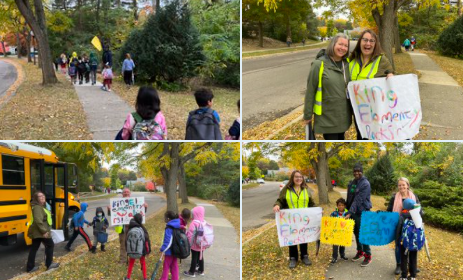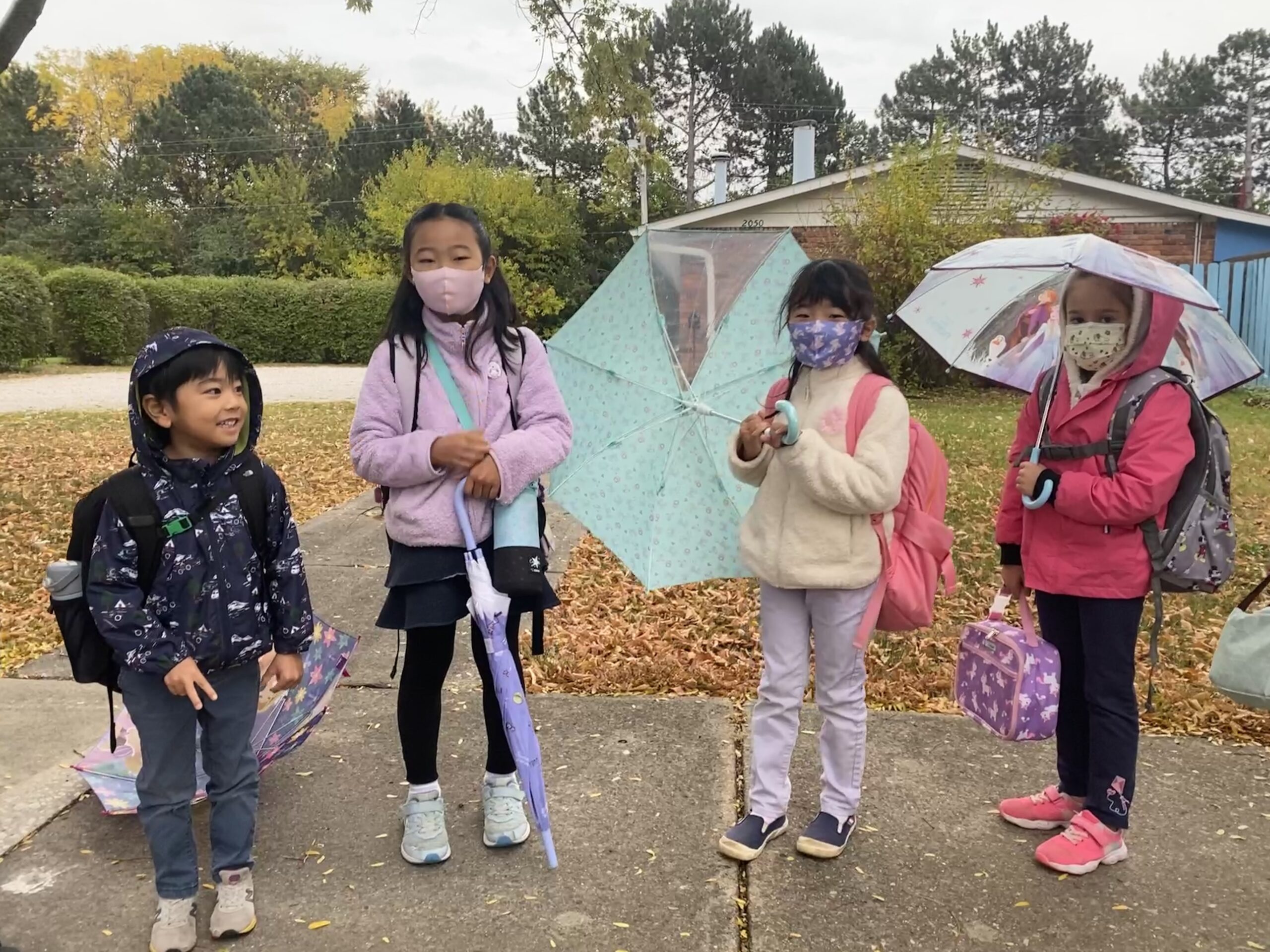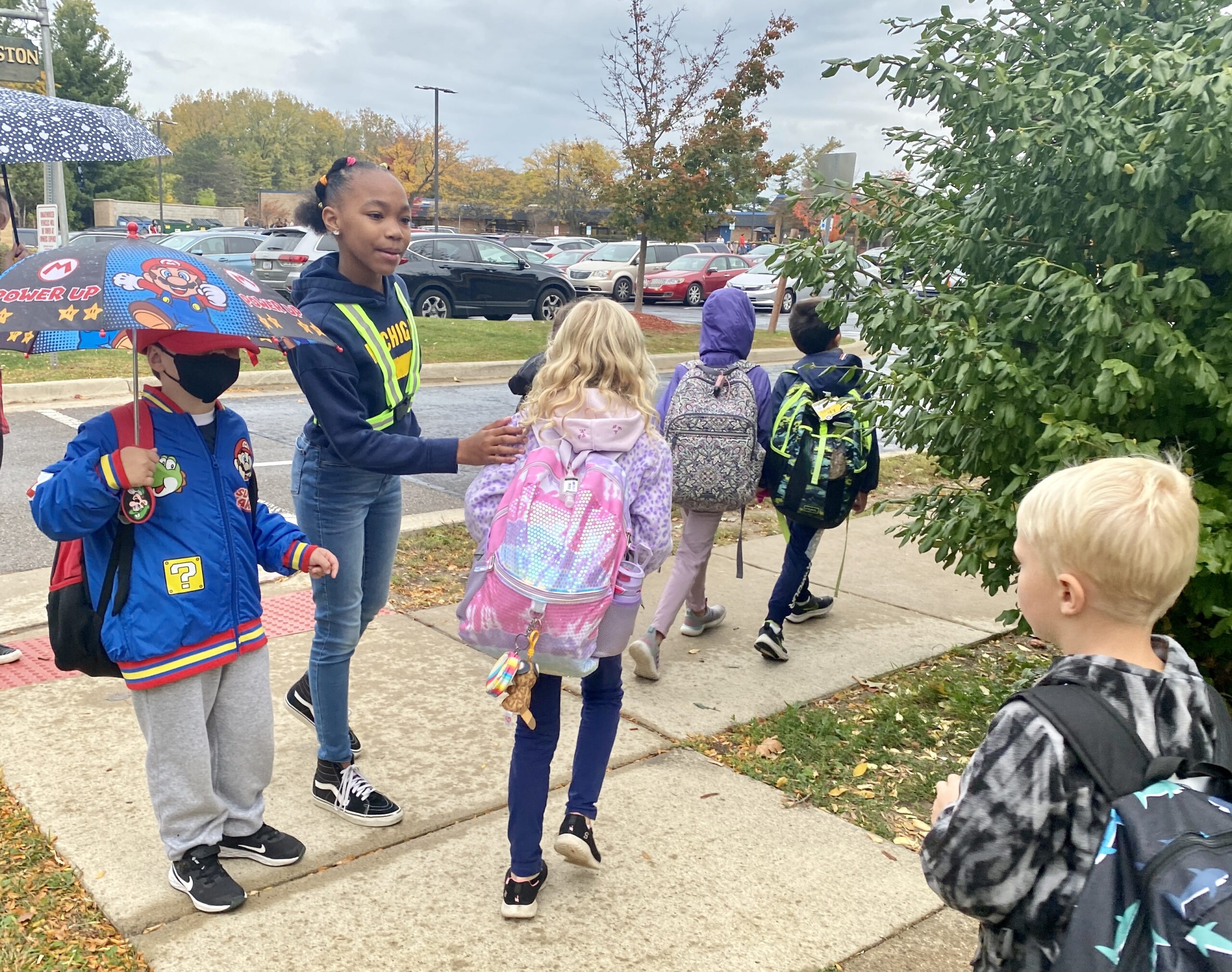See the video from the event at Thurston Elementary
Video by Jo Mathis/AAPS District News Editor
Ann Arbor Public Schools joined in the 26th annual National Walk & Roll to School Day today, with students across the district walking, biking, or using scooters to get to school as busses stopped a few blocks from school to allow those students to walk the final way.
Ann Arbor Public School and the city of Ann Arbor, through the Safe Route to School Partnership, recognized the day.

The 6 Es of Safe Routes to School
Comprehensive Safe Routes to School initiatives have been shown to be more effective at increasing physical activity and reducing injuries. The Six Es of Safe Routes to School summarize the key components of a comprehensive, integrated approach. For more information about how each of the 6 Es factor into a comprehensive Safe Routes to School program, and tools to support including the 6 Es, see The Basics of Safe Routes to School.
Note: Effective June 2020, the Safe Routes Partnership dropped Enforcement as one of the 6 Es of Safe Routes to School and added Engagement as the first E.
ENGAGEMENT – All Safe Routes to School initiatives should begin by listening to students, families, teachers, and school leaders and working with existing community organizations, and build intentional, ongoing engagement opportunities into the program structure.
EQUITY – Ensuring that Safe Routes to School initiatives are benefiting all demographic groups, with particular attention to ensuring safe, healthy, and fair outcomes for low-income students, students of color, students of all genders, students with disabilities, and others.
ENGINEERING – Creating physical improvements to streets and neighborhoods that make walking and bicycling safer, more comfortable, and more convenient.
ENCOURAGEMENT – Generating enthusiasm and increased walking and bicycling for students through events, activities, and programs.
EDUCATION – Providing students and the community with the skills to walk and bicycle safely, educating them about the benefits of walking and bicycling, and teaching them about the broad range of transportation choices.
EVALUATION – Assessing which approaches are more or less successful, ensuring that programs and initiatives are supporting equitable outcomes, and identifying unintended consequences or opportunities to improve the effectiveness of each approach.



Be the first to comment